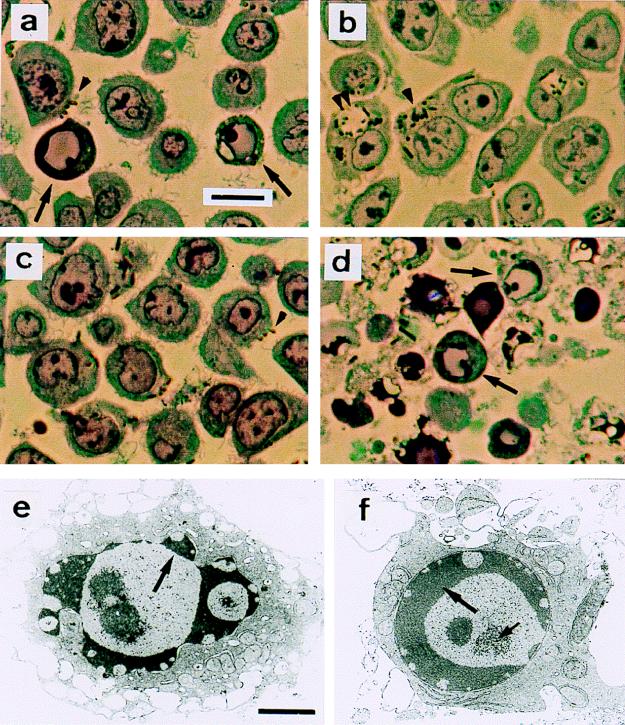FIG. 4.
YopP-induced apoptosis. Semithin sections were stained with toluidine blue and examined by light microscopy (a to d). (a) Wild-type Y. enterocolitica E40. Apoptotic nuclei (arrows) and cell surface-associated bacteria (brown particles, arrowhead) are visible. (b) yscN secretion mutant. No apoptotic cells are detected. Internalized bacteria either in tight (single arrowhead) or spacious (double arrowhead) phagosomes are abundant. (c) yopP effector mutant. No apoptotic cells are detected. Bacteria are seen at the cell surface (arrowhead). (d) yopP+++ (yopP cloned in a multicopy vector). Apoptotic cells are visible (arrows). (e and f) Ultrastructural analysis of cells infected with yopP+++ from panel d is shown. Typical features of apoptosis include (i) peripheral chromatin condensation in crescents, except in the vicinity of nuclear pores (large arrows); (ii) bulging of nuclear crescents into the cytoplasm (best seen in panel e); and (iii) appearance of central clusters of small particles of unknown nature, typical of apoptosis (small arrow in panel f). Nuclear and plasma membrane alterations contrast with a good ultrastructural preservation of cytoplasm, particularly of endoplasmic reticulum and mitochondria. Bars, 10 μm (a to d) and 2 μm (e and f). Reprinted from reference 232 with permission of the publisher.

